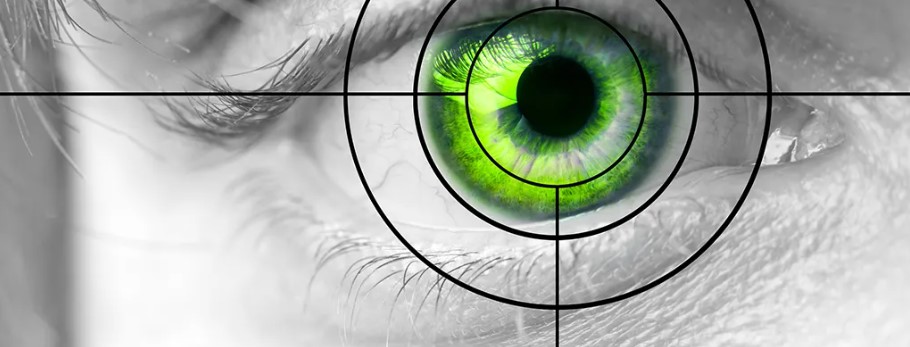More than 4.2 million Americans are either legally blind or are with low vision in the better-seeing eye, excluding those who were categorized as being blind.
The leading causes of blindness and low vision in the United States are primarily age-related eye diseases such as age-related macular degeneration, cataract, diabetic retinopathy, and glaucoma. Other common eye disorders include amblyopia and strabismus.
WHAT ARE THE COMMON VISION PROBLEMS?
NEARSIGHTEDNESS: You’ve got blurry vision that gets worse when you look at distant objects. This condition is called myopia. You may have very good close vision.
FARSIGHTEDNESS: You’ve got blurry vision when you look at close up objects. Near and far objects can look fuzzy. This condition iss called hyperopia.
NIGHT BLINDNESS: It’s hard to see objects in low light.
COLOR BLINDNESS: You have trouble with the intensity of colors or shades. Because it’s all about perception, you may not know there’s a problem until the doctor finds it. This genetic condition only affects men.
ASTIGMATISM: You might have blurry or double vision at any distance. You may also be nearsighted or farsighted.
DETACHED RETINA: You will notice a sudden onset of flashing lights often paired with black floaters in your vision. It won’t hurt, but at first you might see a dark curtain or veil covering a portion of your vision. Cover one eye and then the other and compare the sight in each one. It’s important to call your doctor immediately if you notice any of these symptoms.
STRABISMUS: Your eyes don’t move together as they should. Both eyes or just one could be crossed inward or outward. A child who has it may rub one or both eyes often. They could also tilt their head, squint, or close one eye to see things better.
CATARACTS: Because they develop slowly, your first symptom may be trouble with the vision test for your driver’s license renewal. Or your doctor could spot it during a routine eye exam.
THE SYMPTOMS MAY INCLUDE:
- Weaker vision at night, particularly when driving; having trouble seeing movement, details, or objects
- Hazy vision that might be worse in bright light
- Blinding or uncomfortable glare from automobile headlights or bright sunlight
- A need for brighter light for reading
- Colors look faded or yellow
- Double or triple vision (images overlap) in one eye only
- A normally dark pupil looks milky white or opaque (advanced cases)
- Painful inflammation and pressure within the eye (very advanced case)
GLAUCOMA: The symptoms may depend on the type of glaucoma:
- Chronic open-angle glaucoma: No symptoms until it’s caused serious eye damage
- Acute glaucoma: A sudden onset of severe throbbing eye pain, headaches, blurred vision, rainbow halos around lights, red eyes, nausea, and vomiting – It’s a medical emergency
- Secondary glaucoma: This type results from an injury, inflammation, a drug, cataracts, or diabetes – Your symptoms will be tied to the cause
- Congenital glaucoma: This type affects infants. You’ll notice teary or cloudy eyes, unusual sensitivity to light, and enlarged corneas – It can affect one or both eyes
MACULAR DEGENERATION:
- Dim or wavy vision, especially when you read
- Straight lines often look crooked
- Gradual, painless loss of precise central vision
- Blank spots in your central field of vision
MAKE SURE TO SEE A DOCTOR IF:
- You feel like a dark curtain covers part of your side vision – Call right away to rule out other serious causes of this problem, like stroke
- You have symptoms of retinal detachment such as floaters or flashes of light in your vision – You need immediate treatment to save vision in that eye
- You have a foreign object in your eye that won’t come out with water – If you don’t treat it, you could scar your eye or get an infection
- You become unusually sensitive to bright light – You may have inflammation inside your eye (iritis/uveitis)
- You have discomfort when you wear contacts or have pain that won’t go away even after you take the contact out – You may have a scratch, inflamed cornea (this condition is called keratitis), or a corneal ulcer
- You get an eye injury that affects your vision – You might have internal bleeding or a fracture of the bone around your eye – This is a medical emergency
A GOOD RULE OF THUMB: Go to the doctor if you have any unusual:
- Redness
- Irritation
- Pain
- Discharge
- Vision changes
Coming to a close…
WE NOW TALKED EXTENSIVELY ABOUT VISION PROBLEMS. BUT HAVE YOU HEARD ABOUT THIS “WINDEX TRICK” FOR SHARPER EYESIGHT?
This is CRAZY.
If you swallow THIS…
It can help improve your vision in 1-hour.
One doctor said, “It’s like Windex for your eyes.”
Imagine being able to drive at night – without struggling to see.
Or watching TV from across the room – without glasses.
Or reading a book – without a magnifying glass.
It sounds too good to be true… yet this stunning new vision fix is now backed by 23 medical studies.
And best of all? It might already be in your refrigerator.
So if you’re tired of your eyes getting worse every year…
… skip the eye doctor and swallow THIS now!
Swallow THIS for Better Vision in 1-Hour


